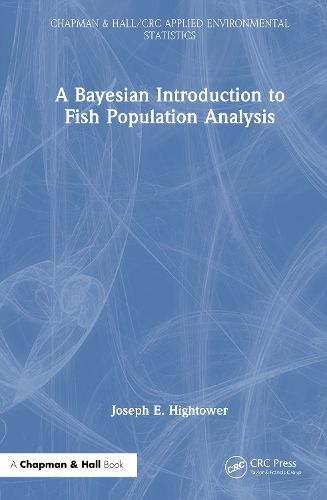Readings Newsletter
Become a Readings Member to make your shopping experience even easier.
Sign in or sign up for free!
You’re not far away from qualifying for FREE standard shipping within Australia
You’ve qualified for FREE standard shipping within Australia
The cart is loading…






Fisheries science is an applied field. A biologist working on a depleted population might need to forecast the population trajectory or examine which factors are limiting recovery. For an exploited population, a biologist might investigate whether the fishery or the stock would be improved through harvest regulation, such as a quota or size limit. Addressing those sorts of questions generally involves estimating parameters such as population size or survival rate. An essential step is characterizing the degree of uncertainty in results, which can be substantial for fisheries models. Bayesian methods and current software provide a flexible and powerful framework for addressing these challenges. Models developed using Bayesian software can be tailored to the unique aspects of each field study.
A Bayesian Introduction to Fish Population Analysis is aimed at advanced undergraduate and graduate students as well as working professionals interested in a hands-on introduction to Bayesian approaches for fitting fisheries models. Chapters address key aspects of population dynamics: abundance, mortality, growth, and recruitment. The book includes complete R code for simulating each study design and JAGS Bayesian code for model fitting; code files are also available online. No prior knowledge of R or JAGS is assumed and new commands are introduced gradually through the sequence of examples. There is emphasis throughout the book on how to vary simulation settings to develop intuition about fisheries models (e.g., how many fish should be tagged in order to obtain usefully precise results). Additional topics include development of integrated population models, model checking, model selection, and uninformative and informative prior distributions.
Key features include:
The book begins with a focus on ecologically relevant probability distributions (e.g. binomial, Poisson, normal, lognormal) as a foundation for the applied fisheries chapters Subsequent chapters demonstrate Bayesian approaches for estimating abundance, mortality, growth, and recruitment. Full open-source code is provided for simulation and plotting using R and Bayesian model fitting using JAGS. The book demonstrates how simulation can be used to gain a deeper understanding of analytical methods and for planning field studies.
$9.00 standard shipping within Australia
FREE standard shipping within Australia for orders over $100.00
Express & International shipping calculated at checkout
Fisheries science is an applied field. A biologist working on a depleted population might need to forecast the population trajectory or examine which factors are limiting recovery. For an exploited population, a biologist might investigate whether the fishery or the stock would be improved through harvest regulation, such as a quota or size limit. Addressing those sorts of questions generally involves estimating parameters such as population size or survival rate. An essential step is characterizing the degree of uncertainty in results, which can be substantial for fisheries models. Bayesian methods and current software provide a flexible and powerful framework for addressing these challenges. Models developed using Bayesian software can be tailored to the unique aspects of each field study.
A Bayesian Introduction to Fish Population Analysis is aimed at advanced undergraduate and graduate students as well as working professionals interested in a hands-on introduction to Bayesian approaches for fitting fisheries models. Chapters address key aspects of population dynamics: abundance, mortality, growth, and recruitment. The book includes complete R code for simulating each study design and JAGS Bayesian code for model fitting; code files are also available online. No prior knowledge of R or JAGS is assumed and new commands are introduced gradually through the sequence of examples. There is emphasis throughout the book on how to vary simulation settings to develop intuition about fisheries models (e.g., how many fish should be tagged in order to obtain usefully precise results). Additional topics include development of integrated population models, model checking, model selection, and uninformative and informative prior distributions.
Key features include:
The book begins with a focus on ecologically relevant probability distributions (e.g. binomial, Poisson, normal, lognormal) as a foundation for the applied fisheries chapters Subsequent chapters demonstrate Bayesian approaches for estimating abundance, mortality, growth, and recruitment. Full open-source code is provided for simulation and plotting using R and Bayesian model fitting using JAGS. The book demonstrates how simulation can be used to gain a deeper understanding of analytical methods and for planning field studies.